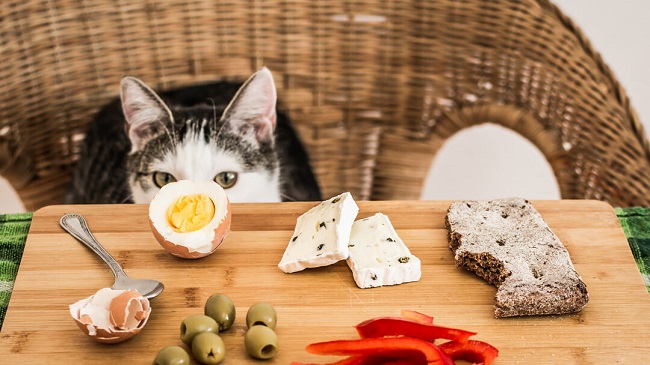Cats are known for their finicky eating habits, but did you know their dietary needs are more complex than just canned cat food and tuna? With a reputation as obligate carnivores, their primary nutritional needs are found in meat.
However, there’s a wide array of foods that are not only safe for cats to eat but can also provide valuable nutrients. This article serves as your comprehensive guide to understanding what foods cats can eat.

Understanding Feline Dietary Needs
Cats require specific nutrients, such as taurine, arachidonic acid, and vitamins A and B, that are predominantly found in meat sources.
Read Also:
However, some other foods can be used as treats or supplement their primary diet. Let’s dive into some of these.
Meat & Poultry
Cats can eat a variety of lean meats, such as chicken, turkey, and rabbit, which should be cooked to kill any potential harmful bacteria. Avoid seasoning, as many spices can be harmful to cats.
Fish
Cooked fish like salmon and tuna can be a delightful treat for cats, offering a good source of proteins and omega-3 fatty acids. However, due to concerns about mercury levels, it should not form the staple of a cat’s diet.
Eggs
Cooked eggs are safe for cats to eat and provide an excellent source of protein. Always cook eggs thoroughly to eliminate the risk of salmonella.
Supplementary Foods for Cats
While cats are carnivores, certain non-meat foods can provide supplementary nutrients or serve as an occasional treat.
Cooked Vegetables
Some cats may enjoy a small portion of cooked vegetables, such as carrots, peas, green beans, and pumpkin. These can aid digestion and provide additional vitamins and fiber.
Cheese
Small amounts of cheese can be a tasty treat for some cats. However, many cats are lactose intolerant, so dairy products should only be given in moderation, if at all.
Cat-Safe Fruits
Certain fruits, such as apples, bananas, and blueberries, can be given in small amounts. Always remove any seeds or pits, as these can be harmful.
Foods Cats Should Avoid
Just as important as knowing what foods cats can eat is understanding which foods are harmful to them. These include onions, garlic, chocolate, caffeine, alcohol, raw bread dough, grapes, and raisins, all of which can be toxic to cats.
Nutritional Balance and Portion Control
Even within the realm of safe foods, it’s crucial to balance your cat’s diet to ensure they get all the necessary nutrients.
Overfeeding, even with healthy foods, can lead to obesity and related health issues. A vet can guide you on appropriate portion sizes and feeding schedules.
Treating with Moderation
Treats can be an excellent way to bond with your cat, reward good behavior, or encourage a fussy eater. However, treats should make up no more than 10% of your cat’s diet. Too many treats can lead to nutrient imbalances and weight gain.
Hydration and Cats
Cats typically get a significant amount of their water intake from their food, especially if they primarily eat wet food. However, they still need access to fresh water at all times to stay properly hydrated.
Reading Cat Food Labels
Understanding how to read cat food labels can help you make healthier choices for your feline friend.
Look for foods that have a named source of animal protein (like chicken or beef) as the first ingredient and avoid foods with unnamed meat, excessive fillers, or artificial preservatives.
Commercial Cat Food vs. Homemade Meals
While homemade cat food allows you to control the quality of ingredients, it can be challenging to meet all of your cat’s specific nutritional needs.
Commercial cat foods are usually designed to be nutritionally complete. If you’re considering making homemade meals, consult with a vet to ensure a balanced diet.
Read Also:
Conclusion
While there’s a spectrum of foods cats can eat, it’s essential to remember that their dietary needs are best met with a high-quality, balanced cat food diet. Supplementary foods and treats should not make up more than 10% of their daily calorie intake.
Always consult with your vet before introducing new foods into your cat’s diet. With the right knowledge, you can ensure your feline friend enjoys a variety of flavors while staying healthy.
























